GHB Detox Overview
Gamma-hydroxybutyrate (GHB) is a popular drug of abuse for its euphoric, anabolic, sedative, and amnestic properties. Cessation of GHB may be life-threatening and results in tremor, tachycardia, insomnia, anxiety, delirium, hypertension, coma, or death. In addition, Gamma-hydroxybutyrate quickly produces addiction and physical dependence at higher doses and can have severe withdrawal symptoms after only short-term use. Much like alcohol withdrawal, GHB addiction and withdrawal symptoms are severe and include tachycardia, hallucinations, and coma.
Therapeutic and recreational use of GHB can lead to dependence. The withdrawal syndrome may be challenging to diagnose in the ICU because of similarities with delirium tremens. According to National Center for Biotechnology Information, the seizure may be an essential feature of the withdrawal syndrome. [1]
Gamma-hydroxybutyrate (GHB), a commonly used club drug, is a Schedule I controlled substance. It has no accepted medical uses and has a high potential for abuse.
Common Alternative Names for GHB
- Grievous Bodily Harm
- Georgia Home Boy
- Soap
- X
- Liquid ecstasy
- Scoop
- Goop
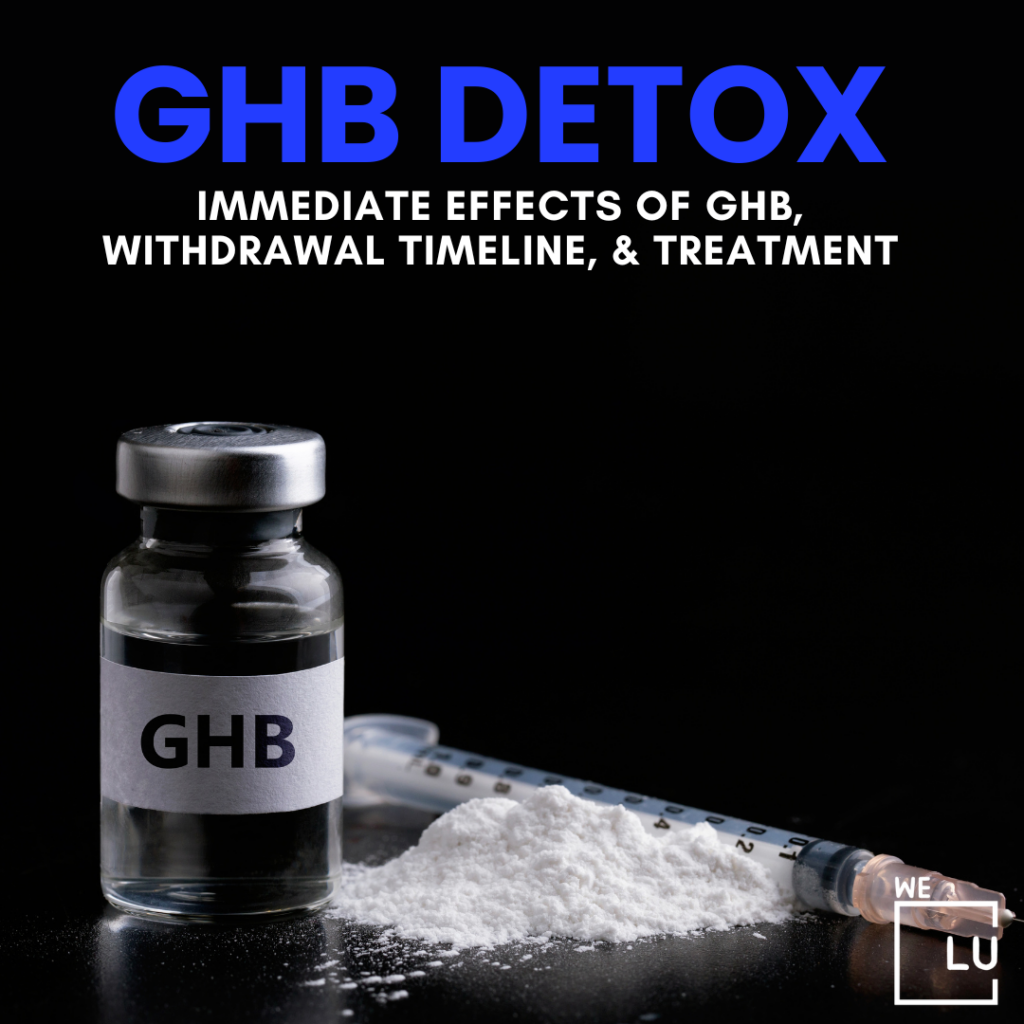
GHB is habitually taken orally in a clear liquid form. It has a slightly salty taste and is frequently mixed with another liquid, such as juice or alcohol to cover up the flavor. GHB may be taken alone or combined with other drugs, particularly alcohol. Some people use it with stimulants, marijuana, and hallucinogens, intensifying the dangers of abusing the substance alone.
The Immediate Effects of GHB
GHB is produced naturally in the body as a metabolite of the inhibitory neurotransmitter GABA in small amounts. ( GABA/Gamma-aminobutyric acid – a naturally occurring amino acid that works as a neurotransmitter in your brain)
Though its mechanism of activity isn’t entirely clear, the molecule itself may have some action as a GABA-B receptor agonist. When consumed as a drug, the intoxicating influences of GHB may be challenging to distinguish from those of other CNS depressant substances. GHB has a range of short-term effects. Often lasting between 2-4 hours, and these may include:
- Euphoria
- Reduced anxiety
- Drowsiness
- Disinhibition
- Increased sociability
Although some users see the intoxicating effects of GHB as pleasing, it can be a hazardous substance. The range between safe and toxic is minimal, and there is no antidote for GHB overdose. At large doses, GHB can result in a variety of hazardous side effects, including:
- Dizziness
- Memory loss
- Confusion
- Visual hallucinations
- Nausea and vomiting
- Seizures
- Reduced body temperature
- Slowed heart rate
- Respiratory depression
- Decreased muscle tone
- Unconsciousness
- Coma
- Death
As with other sedatives, such as benzodiazepines, some GHB users may be at risk of a paradoxical reaction distinguished by aggressive or excited behavior. As a result, their actions may be unpredictable and can double their risk of injury due to accident or assault with impaired judgment and coordination.
Chronic Use & Physical Dependence
Chronic GHB users can develop physical dependence and encounter the onset of withdrawal symptoms with the abrupt discontinuance of or reduction in use. Further, suppose someone dependent on the drug continues to use it to avoid or minimize withdrawal symptoms. In that case, they place themselves at higher risk of cementing the compulsive patterns of substance use common to addiction.
Gamma Hydroxybutyric Acid (GHB) Withdrawal Management
Find medical support for planned GHB detox. Do not attempt to stop abruptly on your own. If you want to reduce your dose, do so in minimal amounts until you find medical support.
At a low dose, it causes euphoria, and it is both sedative and amnestic. However, it has a narrow therapeutic window, and overdose can provoke cardio-respiratory arrest.
GHB has a short half-life and is often not exposed by urine toxicology screening tests. It can be seen using mass spectroscopy, but delays in this process make screening not that helpful clinically. Diagnosis is therefore based on history either from the client or from third parties.
Standard features of withdrawal usually surface six to 24 hours after the client’s last drink and include: [2]
- Tremor
- Sweats
- Nausea and vomiting, poor appetite, diarrhea
- Headache
- Anxiety/restlessness
Other signs of withdrawal syndrome include:
- Elevated heart rate and blood pressure
- Seizures
- Development of confusion or delirium
More acute withdrawal can be prolonged, and agitated delirium can be the initial presentation. This can be confused with intoxication with a hallucinogen or stimulant.
On incidents with severe withdrawal, rhabdomyolysis with secondary renal failure can happen. In addition, Wernicke-Korsakoff Syndrome has been reported in association with GHB withdrawal.
Withdrawal management [3] focuses on:
- Prevention of severe withdrawal
- Reducing the risk of injury (self/others) due to altered mental state
- Reducing the risk of dehydration, electrolyte, and nutritional imbalance
- Preventing Seizures
- Identification and treatment of concurrent medical conditions that can mask or mimic withdrawal or complicate the withdrawal process
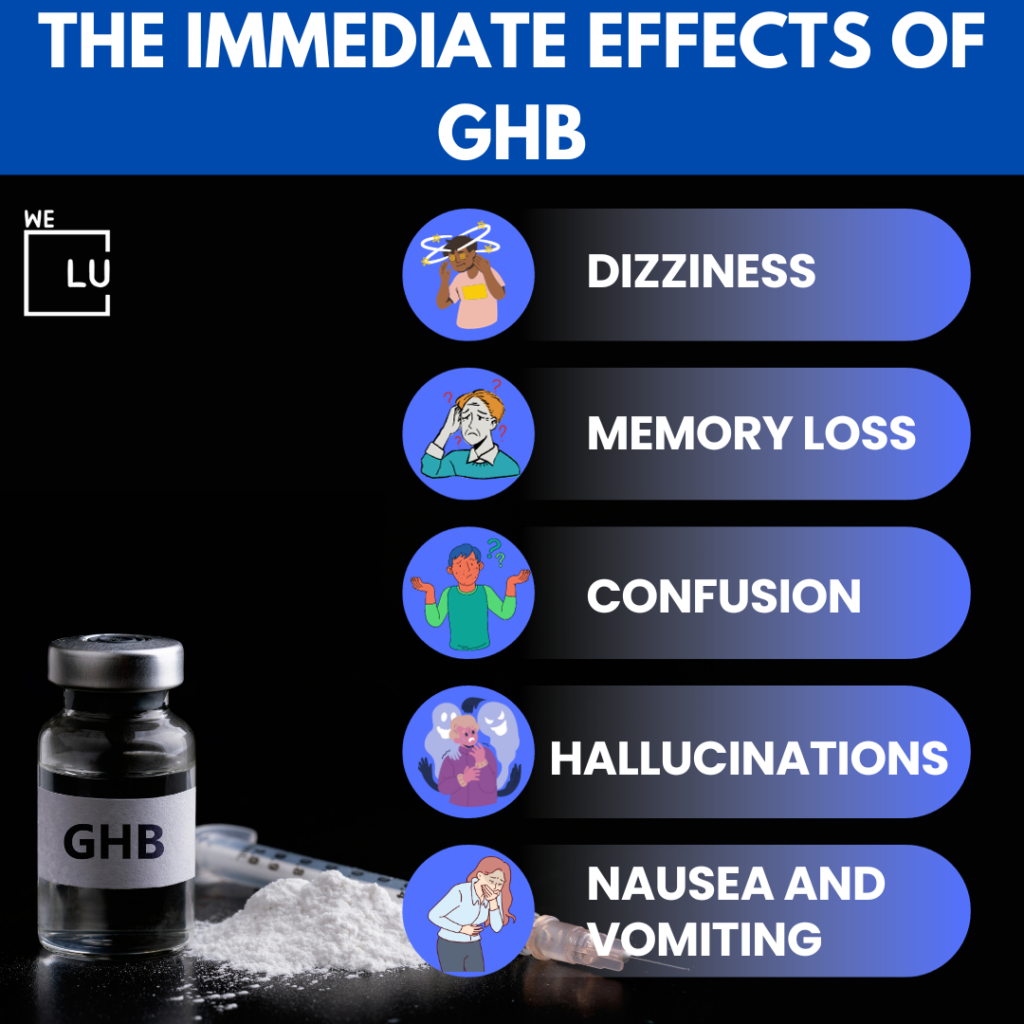
Withdrawal is your body’s natural reaction to being deprived of a chemical substance you have become addicted to. You will experience symptoms of GHB detox withdrawals when attempting to quit or stop using the substance. GHB chemically alters your brain, making both your body and brain adjust to functioning in the presence of GHB. This means your brain believes it needs the substance to function. Therefore, when you attempt to quit using the drug, it can result in both physical and psychological cravings, as well as other physical reactions. Such physical reactions are a result of GHB withdrawal.
Detox Timeline & Protocol
As part of a supervised GHB detox program, medical professionals monitor withdrawal progress to assure that significantly troublesome symptoms and complications are managed appropriately. In many cases, GHB withdrawal is linked with few severe physical symptoms; nevertheless, specific withdrawal effects may intensify and may even be fatal in some cases.
GHB Detox is best carried out through in-house or residential treatment. This way, you can be carefully monitored so that your comfort and safety can be carefully monitored, as your normal dosage of GHB is gradually tapered to control the severity of the withdrawal symptoms that might occur. There have been a number of fatalities occurring amongst patients who abruptly stopped medication, so sudden abstinence from GHB is not recommended – especially if you are a heavy user. The expected length of time required for GHB detox is about 10 – 14 days.
Less severe withdrawal syndromes will typically include supportive care; however, in addition to supportive care, more severe cases may necessitate quick medical action to address possible complications like seizures and agitation.
In supervised GHB detox programs, close monitoring of withdrawal symptoms allows medical and mental health professionals to guarantee your safety. When required, they will also prescribe supportive medications such as sleep aids for insomnia and sedatives for severe anxiety and seizure management.
GHB is a dangerous substance, and its chronic use can negatively affect your health and wellbeing. When it comes to compulsive use, just quitting can be difficult and may not be advisable due to potentially dangerous acute withdrawal manifestations.
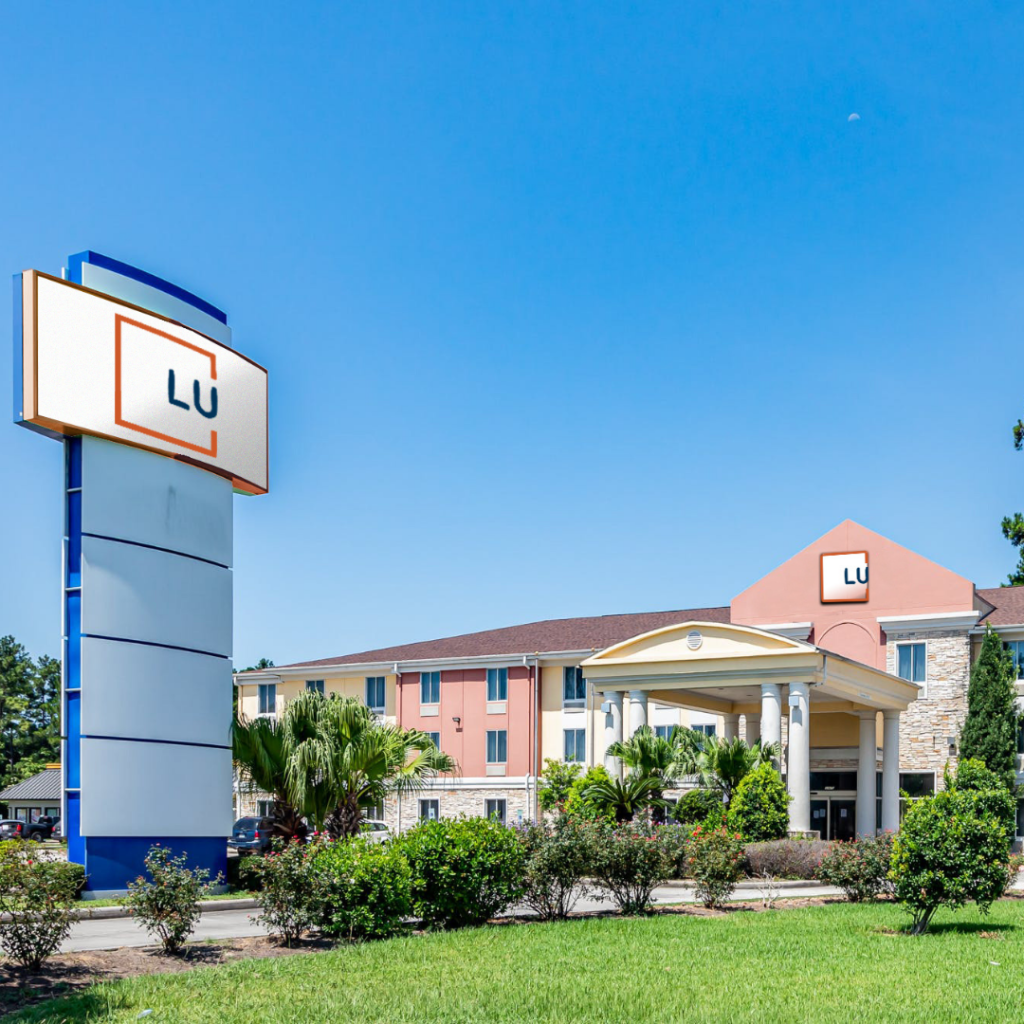
GHB Detox
The infographic below focuses on Gamma-hydroxybutyrate (GHB), a commonly abused drug known for its euphoric, anabolic, sedative, and amnestic effects. Stopping GHB use can be life-threatening, leading to symptoms such as tremors, rapid heart rate, insomnia, anxiety, confusion, high blood pressure, coma, or even death. GHB can quickly lead to addiction and physical dependence, with severe withdrawal symptoms, including tachycardia, hallucinations, and coma, even after short-term use, resembling alcohol withdrawal in severity.
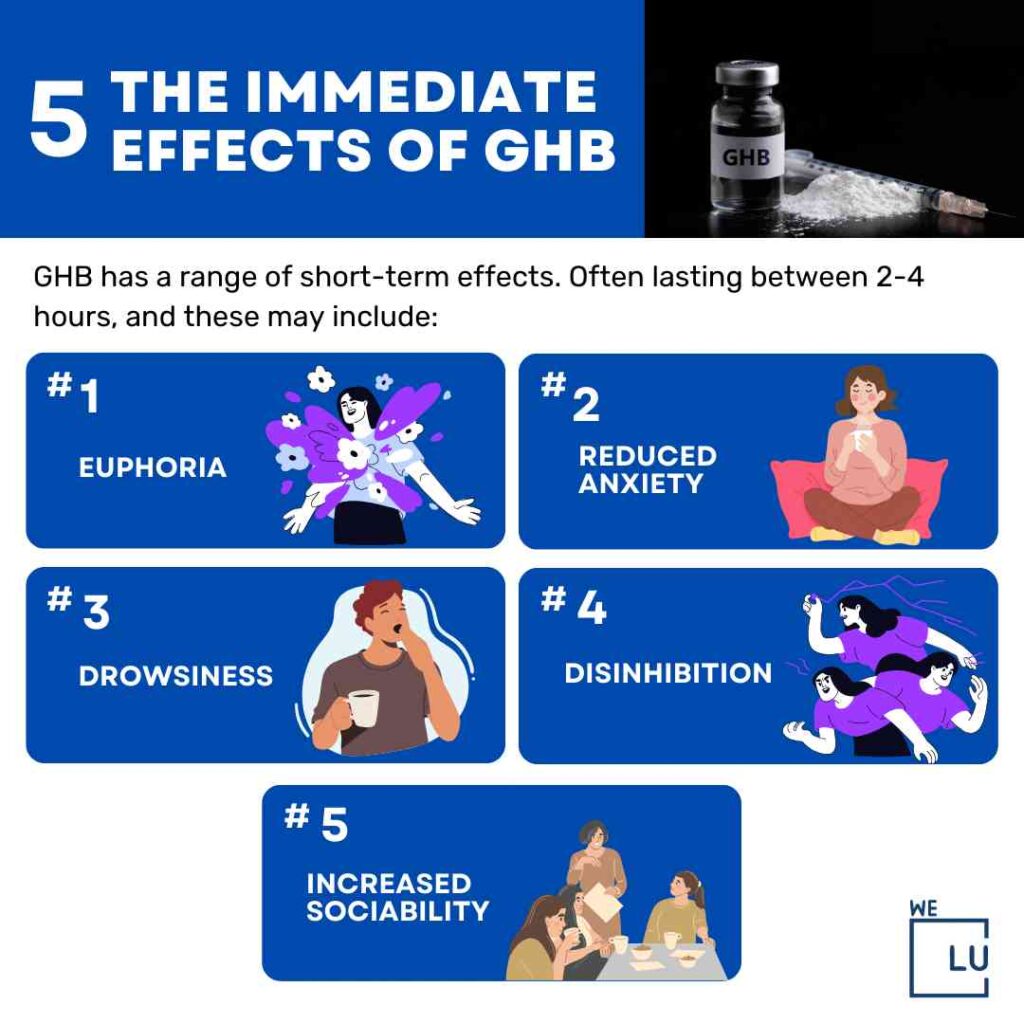
Embed the above “5 The Immediate Effects of GHB” Infographic to your Website. This infographic is provided by the We Level Up Addiction Treatment Center team. To use the above infographics, you agree to link back and attribute its source and owner at https://weleveluptx.com/ghb-detox/
5 The Immediate Effects of GHB image link: https://weleveluptx.com/wp-content/uploads/2024/02/5-The-Immediate-Effects-of-GHB-GHB-Detox-Overview-The-Immediate-Effects-of-GHB-Gamma-Hydroxybutyric-Acid-GHB-Withdrawal-Management-GHB-Detox-Therapy-1024×1024.jpg
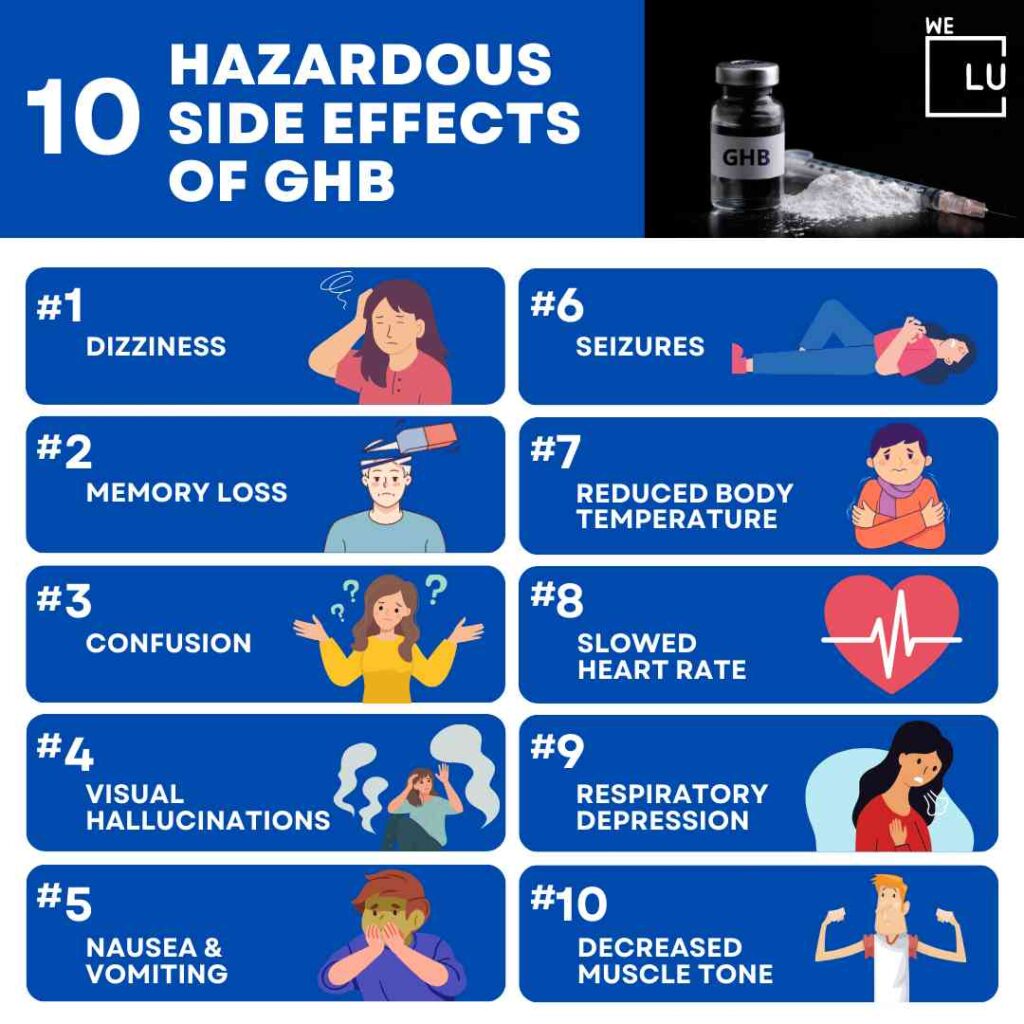
Embed the above “10 Hazardous Side Effects of GHB” Infographic to your Website. This infographic is provided by the We Level Up Addiction Treatment Center team. To use the above infographics, you agree to link back and attribute its source and owner at https://weleveluptx.com/ghb-detox/
10 Hazardous Side Effects of GHB image link: https://weleveluptx.com/wp-content/uploads/2024/02/10-Hazardous-Side-Effects-of-GHB-GHB-Detox-Overview-The-Immediate-Effects-of-GHB-Gamma-Hydroxybutyric-Acid-GHB-Withdrawal-Management-GHB-Detox-Therapy-1024×1024.jpg
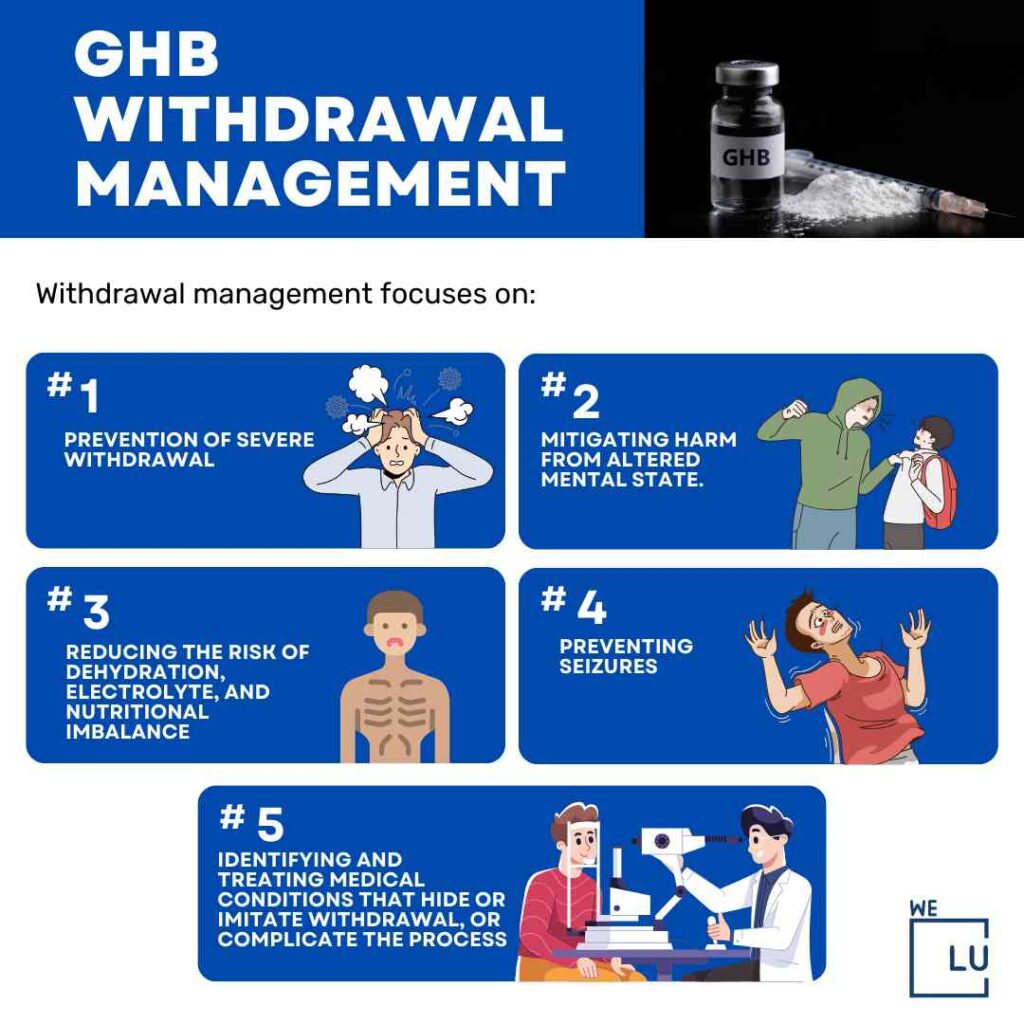
Embed the above “GHB Withdrawal Management” Infographic to your Website. This infographic is provided by the We Level Up Addiction Treatment Center team. To use the above infographics, you agree to link back and attribute its source and owner at https://weleveluptx.com/ghb-detox/
GHB Withdrawal Management image link: https://weleveluptx.com/wp-content/uploads/2024/02/GHB-Withdrawal-Management-GHB-Detox-Overview-The-Immediate-Effects-of-GHB-Gamma-Hydroxybutyric-Acid-GHB-Withdrawal-Management-GHB-Detox-Therapy-1024×1024.jpg
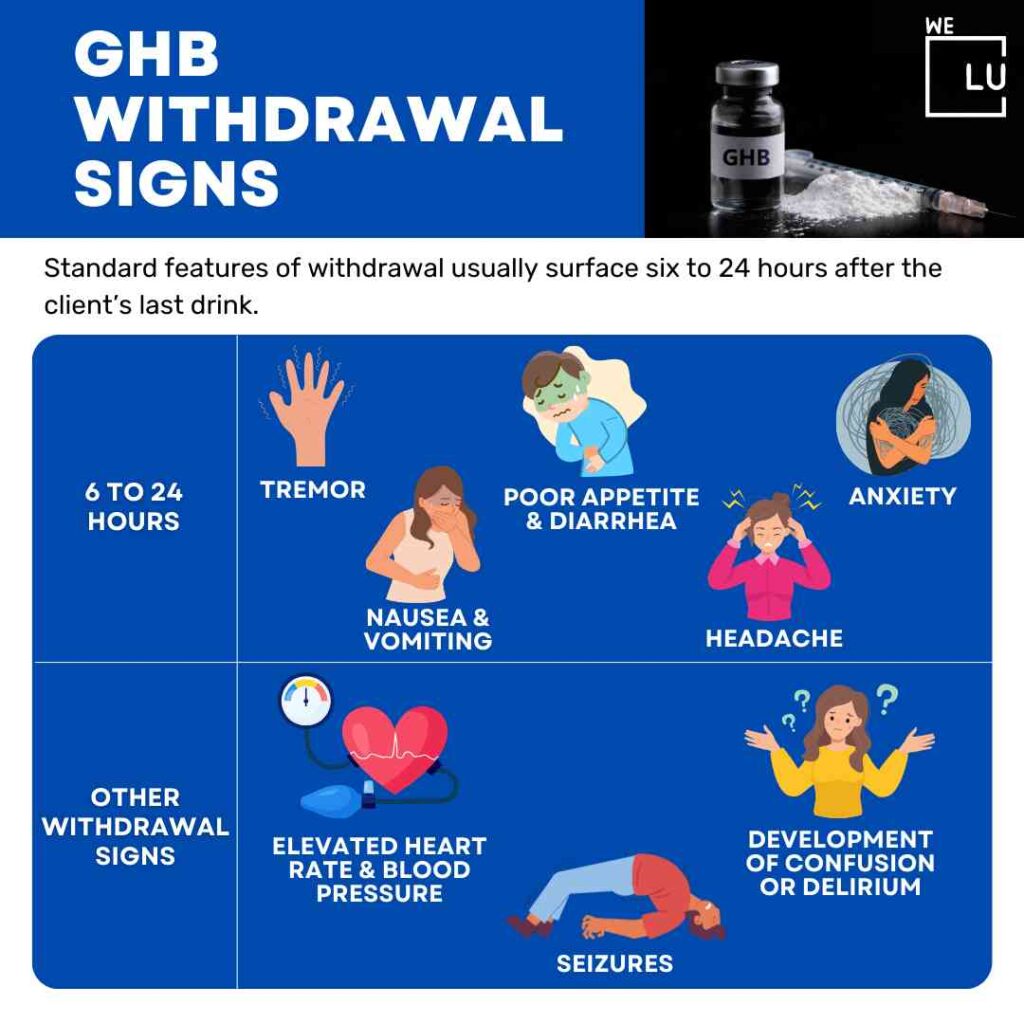
Embed the above “GHB Withdrawal Signs” Infographic to your Website. This infographic is provided by the We Level Up Addiction Treatment Center team. To use the above infographics, you agree to link back and attribute its source and owner at https://weleveluptx.com/ghb-detox/
GHB Withdrawal Signs image link: https://weleveluptx.com/wp-content/uploads/2024/02/GHB-Withdrawal-Signs-GHB-Detox-Overview-The-Immediate-Effects-of-GHB-Gamma-Hydroxybutyric-Acid-GHB-Withdrawal-Management-GHB-Detox-Therapy-1024×1024.jpg
Evaluation, Detox, Treatment
In order to figure out if you need a medical detox program to keep you safe and comfortable during the withdrawal portion of early recovery, you should ideally be evaluated by a medical doctor or other substance abuse treatment professional. By evaluating the details of your substance abuse history, they can better gauge factors such as addiction severity, the magnitude of physical dependence, and the likelihood of a severe and/or complicated withdrawal to guide their recommendations for the appropriate level of treatment. [3] They will be able to ascertain if your path to recovery needs to involve a period of GHB detox that will put you in a situation where your withdrawal progress is monitored—and your safety ensured.
By evaluating the details of your substance use history, they can better assess factors such as addiction severity, the magnitude of physical dependence, and the possibility of a severe and complicated withdrawal to guide their recommendations for the suitable level of treatment.
The course of inpatient substance treatment will vary greatly, depending on the needs of the individual, including how severe their addiction to GHB is if they are using other drugs and if they have other mental health issues in addition to addiction.
GHB Detox Therapy
In practical terms, you may find your addiction easier or more difficult to break than someone else. Medical supervision is a key part of the process, as the physical and psychological withdrawal symptoms of GHB can be quite disturbing for you. The important thing to remember with GHB addiction treatment is that you are not alone. The right rehab will let you spend time in GHB addiction treatment therapy sessions, where you can explore the reasons why you started GHB. This will help you avoid a relapse in the future after your treatment is over. Therapies may include cognitive-behavioral therapy (CBT), group therapy, motivational interviewing, motivational incentives, and multidimensional family therapy.

We Level Up TX Holistic Approach
For anyone who suffers from addiction, just the thought of having to stop using can cause severe mental distress. But, with the help of a medical detox center, the GHB detox process is manageable. In addition, a comprehensive team prescribing medications can alleviate your withdrawal pains while monitoring your health 24 hours. We are assuring both your safety and comfort.
At We Level Up TX, our thorough approach to rehabilitation supports several levels of care to ensure the best possible outcome for every patient who enters our doors. From an intensive and more supportive atmosphere for those in the early days of recovery to a comfortable residential-style living dynamic upon completion of GHB detox, we are here to help guide you down the safe and results-based path to your sobriety.
To start reclaiming your life from addiction and undergo a comfortable drug detox, you may contact us, and we will guide you to recovery. Seek medical care immediately if you have taken too much GHB/GBL. Do not use other drugs in the hope of reversing the effects.
Sources:
[1] Baclofen and Gamma-Hydroxybutyrate Withdrawal – National Center for Biotechnology Information, U.S. National Library of Medicine
[2- 3] https://www.sahealth.sa.gov.au/wps/wcm/connect/public+content/sa+health+internet/clinical+resources/clinical+programs+and+practice+guidelines/substance+misuse+and+dependence/substance+withdrawal+management/ghb+withdrawal+management Gamma hydroxybutyric acid (GHB) withdrawal management – SA (South Australia) Health
[3] We Level Up » Treatment » GHB Detox